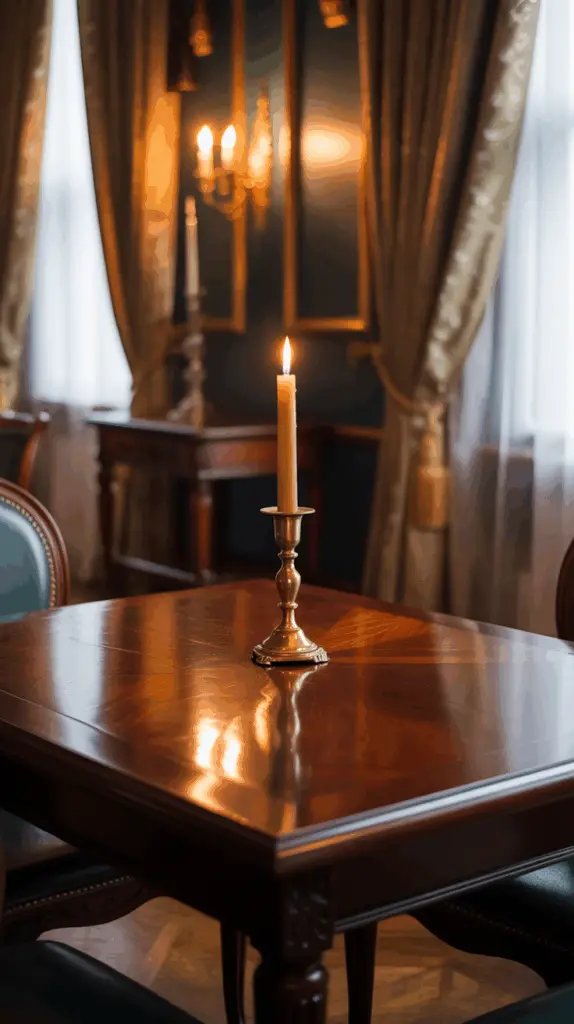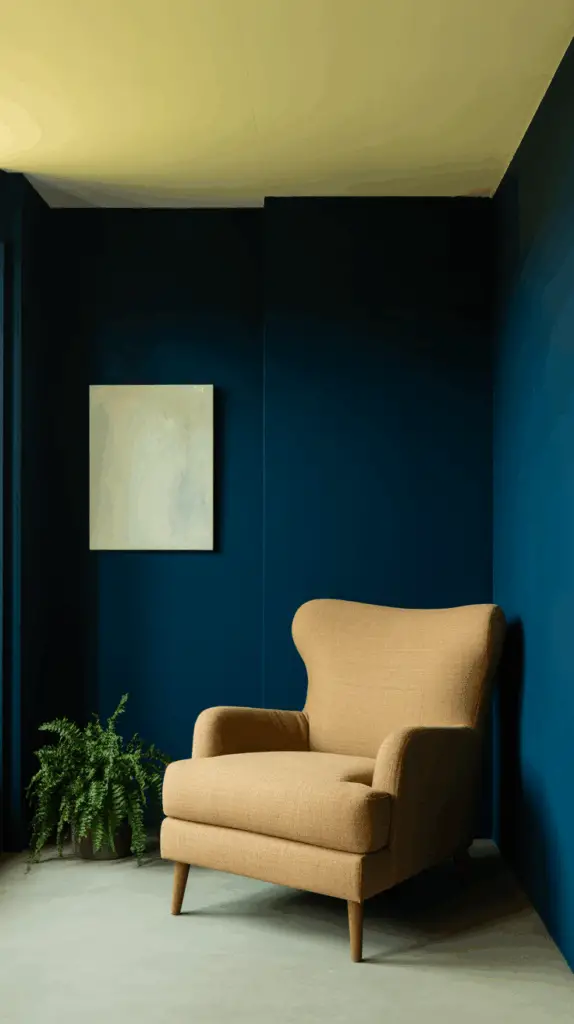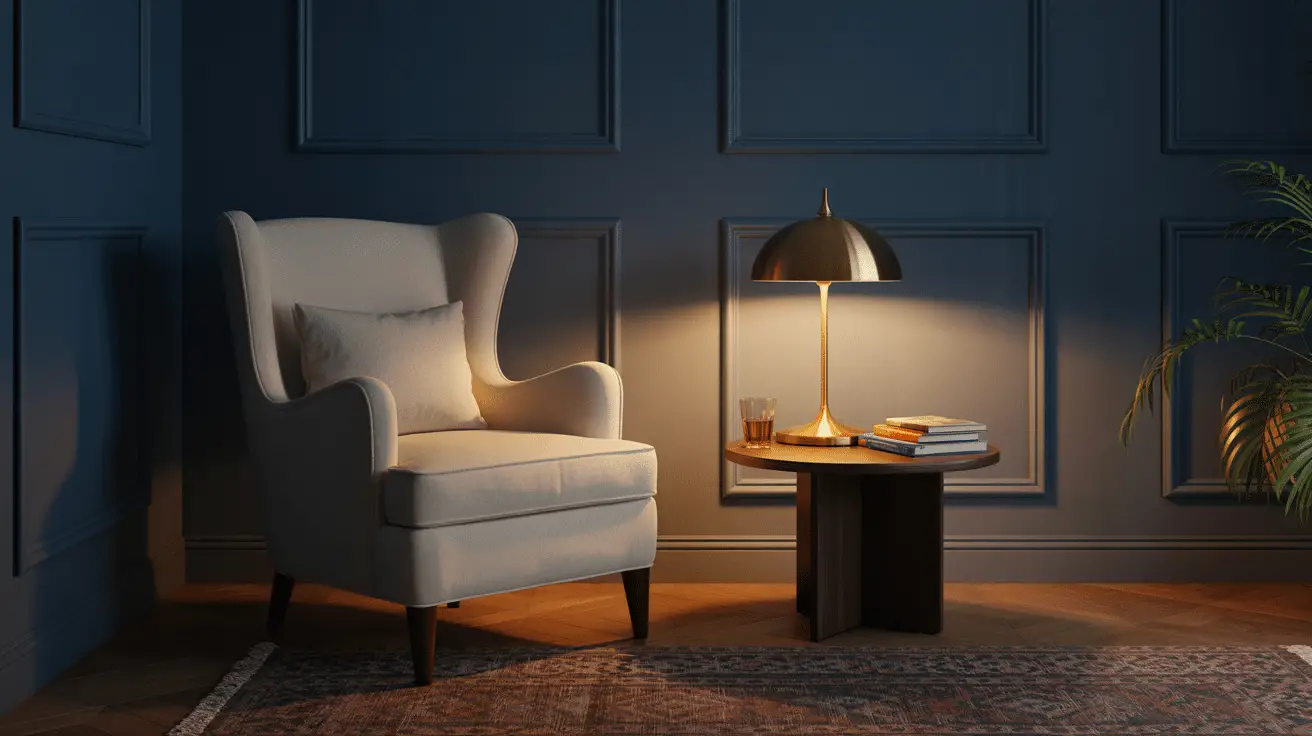The Ultimate Guide to Using Moody Paint Colors in Every Room: Create Stunning, Atmospheric Spaces
Table of Contents
Introduction
There’s something undeniably captivating about moody paint colors—rich blues, deep greens, and sophisticated charcoal shades that transform a room into a sanctuary. If you’ve ever walked into a room and felt instantly drawn to its atmosphere, chances are, moody paint played a role in setting the tone. While bright, airy colors certainly have their place, moody hues offer a different kind of appeal, evoking comfort, drama, and intimacy.
But how do you incorporate these darker, bolder shades into your home without making the space feel too heavy or claustrophobic? The secret lies in understanding how to balance moody paint colors with the room’s natural light, furniture, and accessories. Whether you want to create a cozy bedroom retreat or a dramatic dining room, moody paint colors can elevate any space.
In this guide, we’ll explore how to use moody paint colors in every room of your home. We’ll cover how to choose the right shades, the best ways to pair them with furniture, and tips for creating a balanced, inviting atmosphere. Whether you’re new to dark shades or a seasoned pro, this guide will help you harness the full potential of moody paint colors to make every room feel uniquely yours.
Understanding Moody Paint Colors: What Makes Them So Special?
Moody paint colors are often characterized by deep, rich hues that evoke a sense of calm and sophistication. These colors—ranging from dark greys and blues to deep greens and purples—create an atmosphere of warmth, depth, and mystery. But what makes moody colors so special, and why do they have such a magnetic appeal?
Psychological Impact of Moody Colors
One of the key reasons moody colors resonate is their psychological effect. These shades tend to evoke a sense of relaxation and introspection, making them ideal for creating intimate, cozy spaces. Deep blues can promote calmness, while rich greens often bring to mind nature and tranquility. Meanwhile, charcoal grays and blacks create drama and sophistication without feeling overwhelming when used thoughtfully.
Moody Colors and Lighting
The way moody colors interact with light can completely change the feeling of a room. In spaces with plenty of natural light, deep colors can bring a sense of balance and elegance without feeling too dark or heavy. However, in smaller or dimly lit rooms, it’s important to choose colors that don’t absorb all the light, as they may make the space feel too enclosed.
| Feature | Effect | Best For |
| Psychological Impact | Creates relaxation and sophistication | Bedrooms, reading nooks |
| Interaction with Light | Balances natural light or adds depth | Living rooms, dining rooms |
| Warmth and Drama | Adds a cozy, inviting atmosphere | Kitchens, home offices |
Choosing the Right Moody Colors for Different Rooms
Not every moody color works in every room. Choosing the right hue for your space depends on the room’s function, natural light, and desired atmosphere. Here’s a breakdown of how to select the perfect moody color for each room in your home.
Living Room: Deep Blues and Grays for a Welcoming Atmosphere
The living room is where you entertain guests, relax after a busy day, and spend time with family. A rich, moody color like navy blue or charcoal gray can make the space feel cozy and inviting. These colors create a perfect backdrop for statement furniture and decorative accents, while still maintaining an air of sophistication. Pair with lighter-colored furniture to keep the space from feeling too dark, and add plenty of warm lighting to highlight the mood.
Bedroom: Soft Greens and Deep Purples for a Restful Retreat
Your bedroom should feel like a sanctuary, and using moody colors can help you achieve that sense of peace and tranquility. Soft green tones, such as sage or olive, can create a restful environment while still feeling lush and calming. For a more dramatic look, deep purples and burgundy hues evoke a sense of luxury and relaxation. Pair these colors with soft, neutral bedding and layered textures to complete the serene vibe.
Dining Room: Elegant Charcoal and Rich Golds for a Warm, Intimate Setting
For dining rooms, moody paint colors can create a sophisticated, intimate ambiance that’s perfect for hosting dinners or enjoying family meals. Charcoal gray, paired with gold or brass accents, can create a luxe atmosphere without feeling too formal. Dark, jewel-toned hues like emerald green or deep plum can also add an element of drama and elegance, ideal for making your dining space feel inviting and special.

| Room | Ideal Moody Color | Best Pairings |
| Living Room | Navy blue, charcoal gray | Light furniture, warm lighting |
| Bedroom | Sage green, deep purple | Neutral bedding, layered textures |
| Dining Room | Charcoal gray, emerald green, plum | Gold accents, dark wood furniture |
Balancing Dark Colors with Light Accents and Textures
One of the challenges of working with moody paint colors is ensuring the room doesn’t feel too heavy or overwhelming. To balance the deep tones, it’s essential to introduce lighter elements and varied textures that provide contrast and depth.
Light Furniture and Decor
One of the easiest ways to balance dark walls is by introducing light-colored furniture. A light-colored sofa, white or light wood furniture, or neutral textiles can create a contrast that prevents the room from feeling too dark. Similarly, pairing deep colors with mirrors, light fixtures, and metallic accents can reflect light and brighten the space.
Layering Textures for Depth
Texture plays a crucial role in making moody colors feel cozy rather than heavy. Layering various textures in your furniture and decor can help create visual interest and soften the intensity of dark hues. Think velvet cushions, wool throws, silk curtains, and leather chairs—each texture enhances the overall mood without competing with the color.
| Element | Benefit | Best For |
| Light Furniture | Creates contrast and lightens the space | Sofas, tables, and shelving |
| Metallic Accents | Reflects light, adds elegance | Lamps, mirrors, and picture frames |
| Textural Layers | Adds depth, warmth, and interest | Cushions, throws, curtains |
Incorporating Moody Paint in Smaller Spaces
While moody colors work wonders in larger rooms, they can also be used effectively in smaller spaces—if done correctly. In smaller rooms, dark colors can make a space feel cozier, but it’s essential to approach them thoughtfully to avoid making the room feel cramped.
Use Lighter Shades on the Ceiling
In a small room, painting the ceiling a lighter shade can help create the illusion of height and openness. If the walls are painted in a rich, moody color, consider a soft cream or light gray ceiling to provide contrast and maintain a sense of space.
Opt for Darker Accent Walls
Instead of committing to an entire room of dark color, consider painting one accent wall in a moody hue. This allows you to achieve the look of a rich, atmospheric space while keeping the room feeling balanced. A dark accent wall works well behind a focal point, such as a bed or a piece of furniture, creating a striking visual effect.

| Tip | Benefit | Best For |
| Lighter Ceilings | Creates the illusion of height | Small rooms or low ceilings |
| Dark Accent Walls | Adds drama without overwhelming | Behind beds, desks, or art pieces |
How to Choose the Right Lighting for Moody Colors
Lighting is key when working with moody paint colors. Without the proper lighting, dark colors can make a room feel cold and uninviting. To truly make the most of moody hues, you’ll need to pay attention to both natural and artificial light sources.
Maximize Natural Light
In rooms with little natural light, it’s essential to choose lighter furniture, mirrors, and accessories that can reflect the available light. Dark colors will absorb natural light, but with the right balance, you can make the most of what you have. If your space gets ample sunlight, dark colors will thrive without making the room feel too heavy.
Layered Lighting for Warmth
In addition to natural light, layered lighting can enhance the atmosphere. Use a combination of overhead lighting, task lighting (like reading lamps), and accent lighting (such as sconces or floor lamps) to create a warm and welcoming environment. Warm-toned light bulbs are ideal for creating the cozy, inviting vibe that moody colors deserve.
| Lighting Type | Benefit | Best For |
| Maximizing Natural Light | Balances dark hues and brightens the space | Living rooms, kitchens |
| Layered Lighting | Creates warmth and enhances ambiance | Bedrooms, dining rooms |
Conclusion
Using moody paint colors in every room of your home can bring depth, sophistication, and a sense of serenity to your living space. By carefully selecting the right hues, balancing them with lighter accents and textures, and incorporating strategic lighting, you can transform any room into a beautiful and inviting space. Whether you prefer the elegance of deep blues, the richness of emerald greens, or the drama of charcoal grays, moody paint colors offer endless opportunities for creating a cozy, atmospheric home. With the tips in this guide, you can embrace these shades confidently and create spaces that reflect your unique style and personality.

